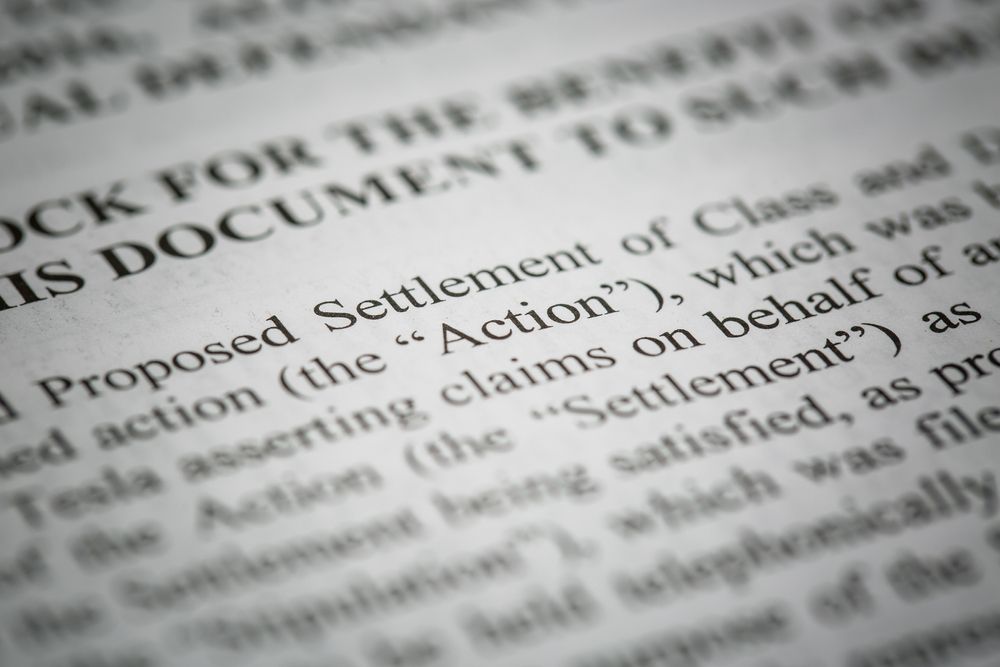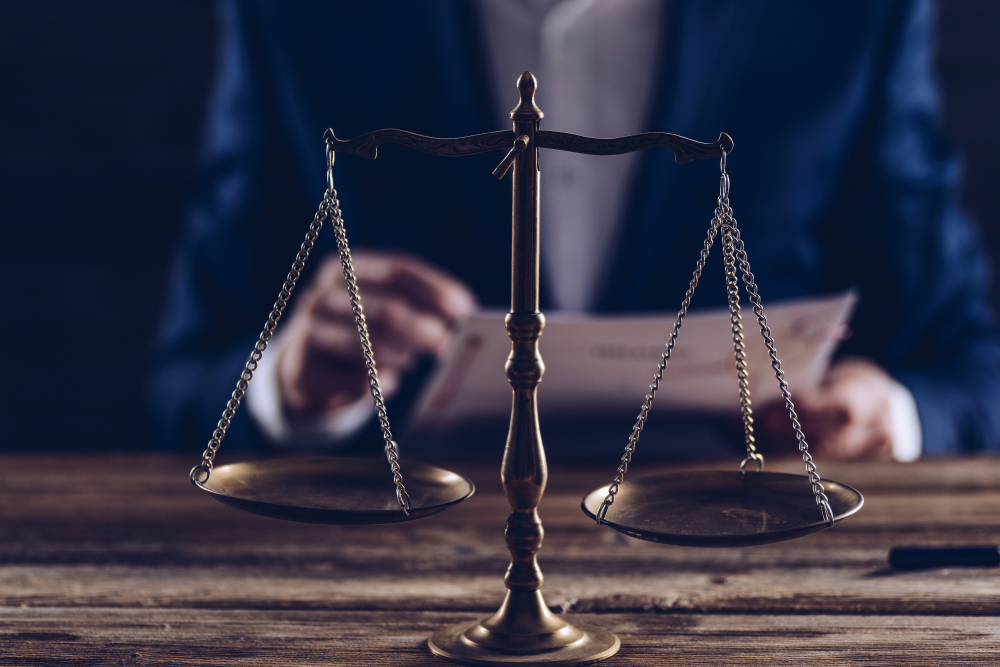Summary
Table of Contents
Why Choose HKGC for Your Mass Torts Lawsuit?
Herman, Katz, Gisleson & Cain has handled mass torts for years and has expert knowledge representing injured parties. Our lawyers have held leadership positions for major mass tort multidistrict litigation (MDL) cases, including the BP Oil Spill, Chinese Drywall and Vioxx. We also teach classes and serve on various committees for mass torts, class actions and other complex litigation.
Some mass torts we are actively working on include Camp Lejeune, Hospital Meta Pixel, NEC & Baby Formula, Paraquat and Roundup lawsuits.
Mass Torts Explained
Knowing the definition of mass tort and when it’s most often used can provide essential context if you’re considering filing a lawsuit.
If you’re injured because of someone else’s negligence, you have the legal right to sue them for damages. Harm doesn’t only include physical injury. Property damage, financial loss, and emotional suffering are all types of damage that may arise in a civil case. Even if an act wasn’t intentional, the wrongdoer might still be required to compensate the injured party financially.
When a group of people experience similar harm at the hands of a large corporation and sue them, it’s called a mass tort. A mass tort makes it easier for lawyers to present powerful, persuasive arguments because they can pool their resources. It can speed up the settlement process and allow plaintiffs’ attorneys to work side by side. Significant mass torts also create publicity, encouraging more people to come forward and broaden the pool of plaintiffs. They can also lead to governmental agencies making policy changes to discourage corporations from misbehaving. It’s essential to know how mass torts differ from other types of litigation to understand the usefulness of these civil actions.

Mass Torts vs. Class Action
Class action lawsuits and mass torts are similar, but a few key distinctions exist. They both involve a large group of plaintiffs who an entity has harmed. Each complaint is no longer treated as an individual case in class action lawsuits. Instead, all plaintiffs join a “class” where a class representative or lead plaintiff represents them. The class must be certified for the litigation to proceed, and certification standards differ based on location. Most states follow the criteria laid out in the Federal Rule of Civil Procedure. There must be enough claimants that it would be impractical for them to bring individual cases against the defendant, and all cases must stem from the same problem.
Many class-action lawsuits involve only minor damages, and plaintiffs may not realize they’ve been affected until they receive a class-action notice in the mail. Plaintiffs in class action lawsuits are less likely to receive sizable settlements, and the reward is usually divided evenly among the class, with class representatives getting a more considerable sum. The size of the class may also affect how much money a plaintiff receives, especially if the defendant is a smaller company.
While mass tort litigation involves multiple cases, they are still separate. In a class-action lawsuit, the plaintiffs are essentially treated as one person. In mass tort litigation, damages might vary depending on the extent of the injury, and a plaintiff severely harmed by a dangerous product or drug would receive more money. Mass tort cases aren’t required to meet the same class certification.
What Is Multidistrict Litigation?
Multidistrict litigation (MDL) is a legal procedure designed to speed up the legal process when multiple plaintiffs sue a defendant for the same problem. After an MDL is established, multiple civil court cases are transferred to the same district court. An MDL often results when people are injured by dangerous drugs or defective products and sue the manufacturer. It’s also common after airline accidents and discriminatory hiring practices when numerous people are affected at once.
Once lawsuits are consolidated into multidistrict litigation, a judge is assigned to preside over the cases within the MDL. The court will schedule test trials, also known as bellwether trials. A handful of representative cases will go to trial, which benefits both sides. These trials give an idea of how the cases might go in court and help plaintiffs gauge their chances of success. A defendant might be motivated to settle with injured parties if they don’t succeed during bellwether trials rather than facing a jury again. An MDL is more efficient because it streamlines cases, and mass tort cases often lead to multidistrict litigation. Even though the procedure consolidates cases, it can take years for multidistrict litigation to resolve fully.
Types of Mass Torts
Defective Products
Dangerous and defective products are often the subject of mass torts. Manufacturers must do their due diligence to ensure a product won’t cause harm. If a product injures people, they may decide to sue. Defective product mass tort claims usually fall into one of three categories.
When a product is inherently flawed from the start, it’s considered a design defect. For example, a car that’s more likely to roll over because of its weight distribution or a children’s toy with pieces that break off easily.
When it comes to manufacturing defects, a product may be adequately designed but become dangerous because of an error in the production process. A product assembled incorrectly that injures people may fall into this category.
Lastly, there are marketing defects, also known as “failures to warn.” If a manufacturer doesn’t properly advise the public of a product’s potential hazards, they can be held liable for any injuries the product causes. If a manufacturer knew or reasonably should have known about a product’s dangers, they’re responsible for sharing that information with the public.

Dangerous Drugs
When a doctor prescribes drugs to a patient, it’s usually understood that side effects can occur. But sometimes, a pharmaceutical company doesn’t fully warn patients of potential risks, leading to people getting sick. Manufacturers can choose to remove dangerous drugs from shelves voluntarily. Otherwise, the U.S. Food & Drug Administration might issue a recall.
More than 131 million Americans take at least one prescription drug. When a medication causes adverse side effects, it can affect a massive group of people. That’s why dangerous drugs often create mass torts. It isn’t efficient to handle these complaints individually due to the sheer number of cases. However, a mass tort still allows each plaintiff to receive different sums from the defendant. Someone who experienced moderate symptoms from a dangerous drug would be awarded less money than someone left disabled because of the medication’s effects.
Toxic Exposure
Toxic exposure mass torts result after a chemical or toxin injures someone. A toxic substance might be inhaled, ingested, or absorbed through the skin or eyes. Some chemicals can cause lasting effects, even when wearing protective gear. Toxic exposures sometimes cause immediate injury, but health damage might not appear for months or even years. Herbicides have been the focus of mass tort claims in recent years. Roundup is the most popular weed killer globally, and its manufacturer has advertised it as safe. It is accessible to the average home gardener and on the shelves of most home stores. Its active ingredient, glyphosate, has been linked with non-Hodgkin’s lymphoma, a lymphatic cancer. Farmers and agricultural workers who had long-term exposure to the herbicide have been diagnosed with cancer at concerning rates. HKGC represents individuals who have gotten sick after being exposed to glyphosate while using Roundup.
Paraquat is another herbicide that has caused a rise in mass tort claims. It’s a commercial weed killer known for its extreme toxicity. Studies have found a link between long-term exposure to paraquat and an increased risk of Parkinson’s disease. Farmworkers who have developed Parkinson’s after working with paraquat are suing Syngenta, the European agricultural company that makes the herbicide. HKGC is representing paraquat plaintiffs who have filed lawsuits against the manufacturer.
Catastrophes & Natural Disasters
Disasters frequently lead to mass tort claims. One of the most well-known class-action lawsuits in the last decade resulted from the 2010 Deepwater Horizon oil spill in the Gulf of Mexico. The oil spill tragically killed 11 workers, decimated coastal economies and the local tourism industry, and irreversibly damaged the environment. HKGC’s experience in these types of claims led to our integral involvement in the BP oil spill litigation.
Mass torts also arise from natural disasters. After a homeowner files a hurricane claim, insurance companies in Louisiana must inspect properties within 30 days and act “reasonably promptly” to pay out claims. Not every insurer abides by these regulations. If an insurance company doesn’t pay property damage claims the way it should, the insured parties might sue to recover their damages.

Why You Need a Louisiana Mass Tort Lawyer
Sometimes, you may not know that a defective product or toxic chemical has harmed you until years after the damage started. Perhaps you see a news article about a link between a product you use and health problems, or your doctor tells you about a possible connection. Contacting a law firm should be your first step when you realize you may have been harmed by a defective product, toxic exposure, or catastrophe.
Many defective product lawsuits become mass tort cases, and it’s essential to contact a law firm that knows mass tort law. Mass torts cases are complex and usually involve large corporations with deep pockets and experienced legal teams. Because these cases typically lead to multidistrict litigation, hiring a lawyer with experience with MDLs and how they work is also important.
Mass Tort Litigation Damages
The damages a plaintiff is eligible for in a mass tort case will vary depending on the case’s specifics, how the defendant harmed the plaintiff, and the extent and impact of any injuries. Damages fall into three groupings: economic, non-economic, and punitive. Economic damages, also known as special damages, are designed to repay the injured person for any money lost. These damages include hospital bills, lost wages, physical therapy, and reduced earning capacity due to the injury. These losses are quantifiable and easily calculated, making it simpler to prove in court.
Non-economic damages, also called general damages, account for losses that don’t have an assigned dollar amount. These might include emotional stress, pain and suffering, loss of enjoyment in life, and physical disfigurement. General damages are more subjective and depend on how much an injury has disrupted someone’s life.
Punitive damages are designed to punish defendants for reckless disregard for other people. In other words, punitive damages make an example out of the defendant to discourage others from behaving the same way. However, the rules surrounding punitive damages vary by state, and Louisiana law only allows punitive awards under strict circumstances, including cases involving child pornography and intoxicated driving.
Contact Herman, Katz, Gisleson & Cain today if you’ve been injured or financially harmed and think your complaint could be part of a larger mass tort claim. Making sense of often-complicated mass tort law can be difficult, and our team of attorneys can answer any questions you may have. Call us at 844-943-7626 or contact us online for a free, no-obligation case review.
Mass Tort Frequently Asked Questions
A mass tort is a legal action involving numerous plaintiffs who have suffered similar injuries or damages caused by a common defendant or a group of defendants.
Although they are similar, there are key distinctions. While mass tort litigation involves multiple cases, they are still separate. In a class-action lawsuit, the plaintiffs are essentially treated as one person.
Camp Lejeune water contamination, NEC and baby formula, Hospital Meta Pixel, Paraquat, Roundup, and Johnson & Johnson talcum baby powder lawsuits are a few of the most recognizable current mass torts.
The personal injury attorneys at Herman, Katz, Gisleson & Cain have decades of experience handling mass tort cases and have expert knowledge of representing injured parties. Our lawyers have held leadership positions for major mass tort multidistrict litigation (MDL) cases, including the BP Oil Spill, Chinese Drywall, and Vioxx. HKGC attorneys teach classes and serve on various committees for mass torts, class actions, and other complex litigation. They possess in-depth knowledge of the relevant laws and regulations, have a thorough understanding of the scientific and technical aspects involved, and are skilled in conducting extensive research, gathering evidence, and building strong cases on behalf of their clients.
The types of damages that can be claimed typically depend on the specific circumstances of the case and the applicable laws.
- Compensatory Damages: These damages aim to compensate plaintiffs for the actual losses and harm they have suffered. They can be economic and non-economic damages.
- Punitive Damages: In some cases, where the defendant’s conduct is deemed particularly reckless, intentional, or grossly negligent, punitive damages may be awarded.
- Medical Expenses: If you have incurred medical costs related to your injuries or illnesses caused by the mass tort, you may be able to claim reimbursement for past, present, and future medical expenses.
- Loss of Income: If your injuries have resulted in a loss of income, such as being unable to work temporarily or permanently, you may be eligible to claim compensation for the wages or earning capacity you have lost and any future income you may be unable to earn due to the injuries.
The duration of a mass tort claim can vary significantly depending on various factors unique to each case, such as the complexity of the litigation, the number of plaintiffs involved, the nature of the harm or injury, the defendant’s willingness to negotiate or settle, and the court’s schedule.
Other Mass Torts News
Parents are filing NEC premature infant formula lawsuits alleging that manufacturers knew or should have known about the risks of NEC but failed to warn about the risks.
A Camp Lejeune lawyer can protect your rights and help you get compensation for injuries from exposure to toxic water at Camp Lejeune.
Camp Lejeune lawsuits allow those who lived or worked at or near Camp Lejeune and suffered from a range of cancers and other serious chronic illnesses, many of which have been fatal, to hold the government accountable.
For more than 60 years, farmers have used paraquat to control the overgrowth of weeds, vegetation, and grass in the U.S. and places around the globe. In Louisiana, the chemical herbicide is used on commercial [...]
Monsanto Company, which was purchased by Bayer in 2018, is facing lawsuits throughout the country brought by individuals who claim that its popular weed killer, Roundup, caused them to develop non-Hodgkin lymphoma.
Most people have heard of class action lawsuits, but few really know what they are. Class action lawsuits can be very complicated, but this article will give you a basic explanation of how they work and what purpose they serve.

